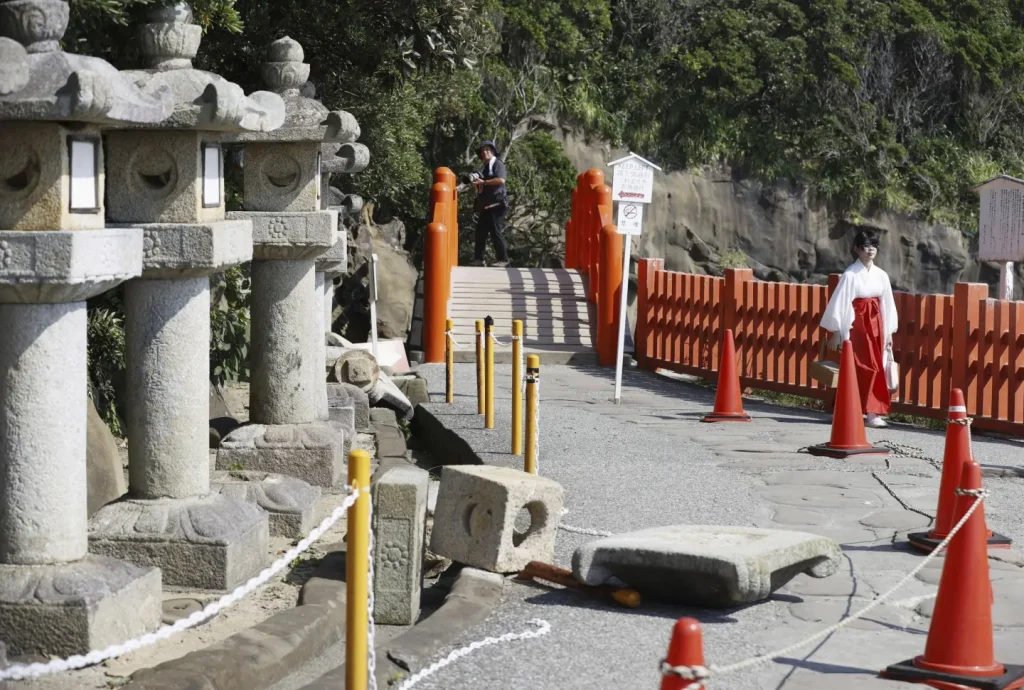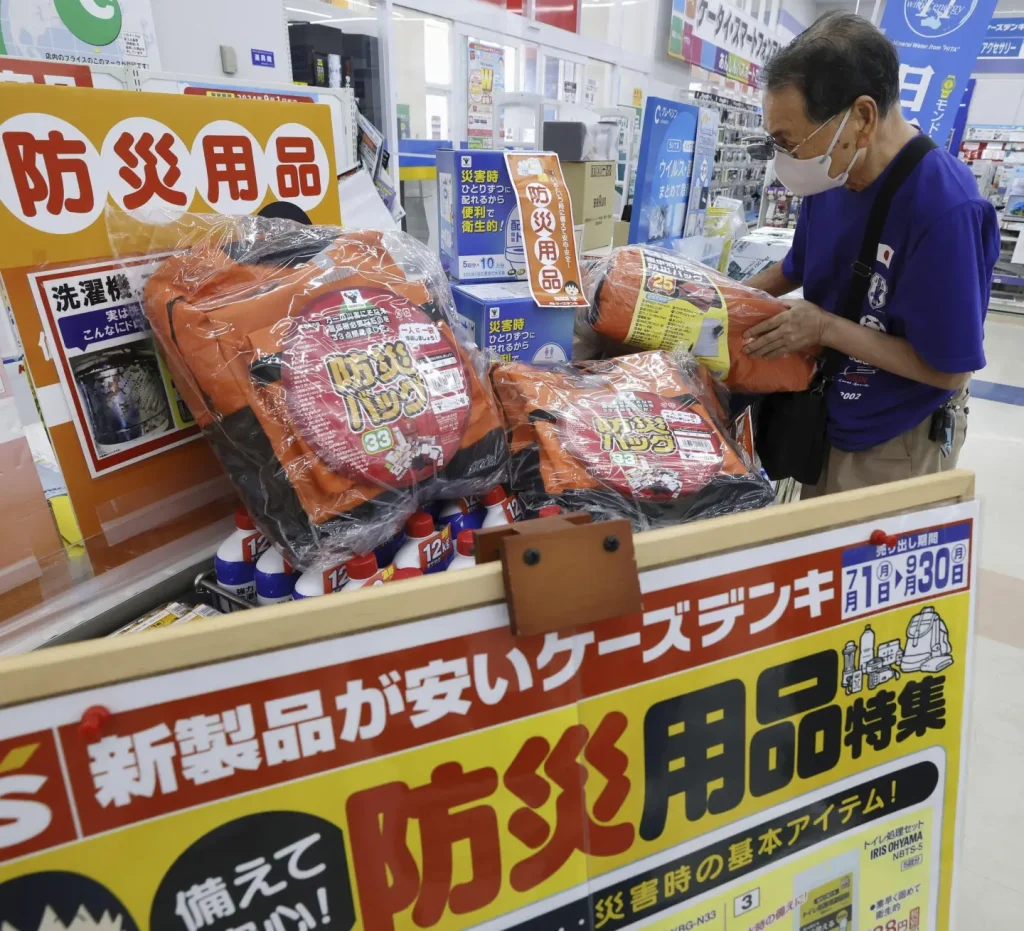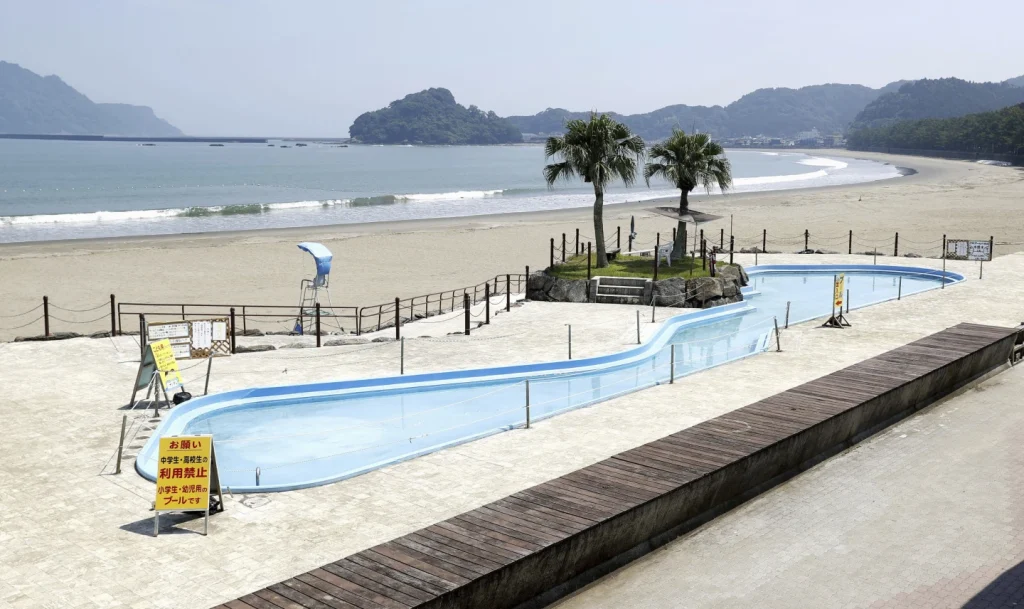Japan, a country known for its frequent earthquakes, was recently issued its first-ever “megaquake advisory” after a powerful quake struck off the coast of Kyushu.
The magnitude 7.1 quake, although not resulting in any deaths or severe damage, has left the nation in a state of confusion and worry about the possibility of a larger earthquake hitting in the near future.
The Japan Meteorological Agency issued the advisory after determining that the recent quake had increased the likelihood of a much larger quake occurring in the Nankai Trough region.
While there is a 70-80% chance of a magnitude 8 or 9 quake in the next 30 years, the JMA stresses that this is not a specific prediction of when or where a megaquake will occur.
Seismologist Naoshi Hirata urged the public to remain cautious and prepared for any potential disasters.
The Nankai Trough, an undersea trench that stretches along the Pacific coast of Japan, is known for its seismic activity.
The interaction between the Philippine Sea Plate and the Eurasian Plate in this region can lead to massive earthquakes and tsunamis.
The last major Nankai Trough quake in 1946 resulted in significant loss of life and destruction, underscoring the potential dangers associated with this area.
A megaquake in the Nankai Trough has the potential to be catastrophic. Government officials have warned that a magnitude 9.1 quake could trigger a tsunami over 10 meters high, causing widespread devastation along Japan’s Pacific coast.
The estimated death toll, building destruction, and economic impact from such an event are staggering, highlighting the urgent need for preparedness and disaster response measures.
As Japan grapples with the aftermath of the recent quake and the looming threat of a megaquake, it serves as a stark reminder of the country’s vulnerability to natural disasters.
With the unpredictability of seismic activity, the importance of readiness and resilience in the face of potential future catastrophes cannot be overstated.

The Japanese government, scientists, and citizens must work together to mitigate risks, enhance early warning systems, and ensure the safety and well-being of all those living in earthquake-prone regions.
In the wake of the “megaquake advisory” issued by the Japanese government, people across the country are grappling with a mix of confusion, fear, and uncertainty.
With Prime Minister Fumio Kishida taking charge of the government’s response, there is a sense of urgency to prepare for a potential disaster.
The Fire and Disaster Management Agency has been working diligently to ensure that municipalities at risk from a Nankai Trough quake are reviewing their response measures and evacuation plans.
However, the complexity of the situation has left many citizens feeling overwhelmed and unsure of how to proceed.For Yoshiko and Shinya Kudo, the advisory has been a source of stress and confusion. A
s they struggle to understand the implications of the warning, they are torn between the need to be prepared and the desire to maintain a sense of normalcy in their daily lives.
Like many others, they have rushed to stock up on essential supplies, only to find shelves empty and resources scarce.Meanwhile, Yoneko Oshima, a resident of Tokyo, is faced with the daunting task of caring for her diabetic husband in the event of a disaster.
With water being a critical necessity for his medication, she has taken the precaution of purchasing a portable toilet to ensure their preparedness.
As the uncertainty looms overhead, experts and officials are urging the public to remain calm and continue with their daily routines while taking necessary precautions.
While the possibility of a megaquake remains a looming threat, the Japanese people are resilient in their determination to face the challenges ahead, even as they navigate the delicate balance between preparedness and normalcy.
As news of the potential disaster spread across Japan, people in various regions began taking precautions and making adjustments to their plans.
In Matsuyama city, Oshima carefully made a list of essential items and ensured that everything they needed was readily available in case of an emergency.
Despite her own holiday plans remaining unchanged, she couldn’t help but worry about her daughter who had decided to cancel her trip to Mount Fuji.
Hotels and resorts in Matsuyama city, known for its hot springs, also took proactive measures by reviewing their evacuation procedures and emergency equipment.
The Dogo Onsen Ryokan Association implemented a radio communication system for emergency use and witnessed a significant number of cancellations following the government’s advisory.
Similarly, rail companies in the region reduced train speeds as a precautionary measure to ensure the safety of passengers.

In Kuroshio, a coastal town in Kochi prefecture, the crisis management task force had initially set up numerous shelters in preparation for a potential tsunami.
However, with the reassurance from the Japan Meteorological Agency that there was no imminent threat of a megaquake, only two shelters remained open.
Meanwhile, Higashi Osaka urged its residents to avoid unnecessary travel in case of a major quake, emphasizing the importance of staying safe and prepared.
The seaside town of Shirahama in Wakayama prefecture also took preventative measures by closing its outdoor hot springs, parks, and other facilities for a week.
The cancellation of the annual fireworks festival served as a reminder of the seriousness of the situation and the need to prioritize safety above all else.
As communities across Japan braced themselves for the possibility of a natural disaster, they stood united in their efforts to protect themselves and their loved ones.
